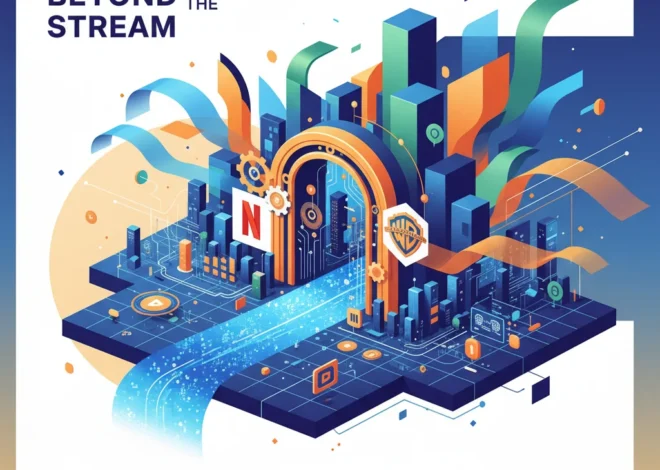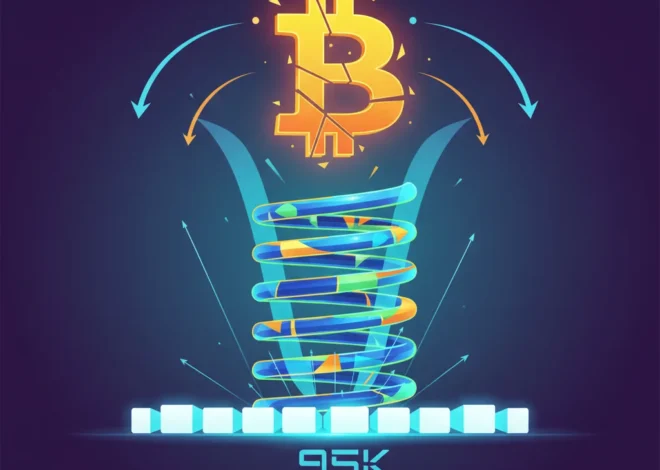
The Dealmaking Drought Is Over: What Goldman and JPMorgan’s Earnings Reveal About the Economy
Wall Street’s Bellwethers Signal a Turning Point
For the past two years, the world of high finance has been in a quiet slumber. The explosive era of dealmaking that defined 2021 gave way to a prolonged drought, as rising interest rates, economic uncertainty, and geopolitical tensions put a freeze on mergers, acquisitions, and initial public offerings (IPOs). But the latest first-quarter earnings from Wall Street titans Goldman Sachs and JPMorgan Chase suggest that a significant thaw is underway. Their results, powered by a remarkable resurgence in investment banking, are more than just numbers on a spreadsheet; they are the “green shoots” signaling a potential return to a more dynamic and confident global economy.
Both banking giants surpassed analyst expectations, but the real story lies within the revival of their core dealmaking divisions. This rebound offers a crucial barometer for corporate confidence and provides valuable insights for investors, business leaders, and anyone with a stake in the stock market. In this analysis, we’ll dissect these pivotal earnings reports, explore the forces driving the investment banking comeback, and examine what this shift means for the broader financial landscape.
A Tale of Two Titans: A Q1 Earnings Breakdown
While both Goldman Sachs and JPMorgan delivered strong results, their market reception told slightly different stories, highlighting the nuances of today’s financial environment. At first glance, the headline figures paint a picture of robust health for two of the world’s most influential financial institutions.
JPMorgan Chase, the largest US bank, reported a formidable net income of $13.4 billion for the quarter. However, its stock dipped following the announcement, primarily due to guidance on its net interest income (NII)—the money it earns from lending—which didn’t meet the market’s most optimistic projections. In contrast, Goldman Sachs saw its net income surge 28% to $4.1 billion, leading to a nearly 3% rise in its share price. The key driver for both, however, was the impressive performance of their investment banking arms.
Here’s a comparative look at their standout Q1 2024 performance:
| Metric | Goldman Sachs (Q1 2024) | JPMorgan Chase (Q1 2024) |
|---|---|---|
| Net Income | $4.1 billion (+28% YoY) | $13.4 billion (+6% YoY) |
| Investment Banking Fees | $2.1 billion (+32% YoY) | $2 billion (+27% YoY) |
| Primary Driver | Surge in debt and equity underwriting | Strong rebound in capital markets activity |
| Immediate Stock Reaction | +2.9% | -6.5% |
This data clearly illustrates the powerful recovery in investment banking. After a prolonged period where corporations hesitated to raise capital or pursue ambitious deals, the floodgates are beginning to open. This resurgence is not just good news for the banks; it’s a critical signal for the entire investing ecosystem.
Decoding the Rebound: What’s Fueling the Investment Banking Surge?
The term “investment banking” encompasses several distinct activities, and the current recovery is being led by specific segments. Understanding these components is key to grasping the full picture of the market’s revival.
1. Debt Underwriting: The Engine of the Recovery
The most significant momentum comes from debt underwriting. This is the process where banks help companies and governments issue bonds to raise capital. With expectations that interest rates may have peaked, many companies are rushing to lock in current borrowing costs before any potential market shifts. They are refinancing old, more expensive debt and raising new funds for growth, creating a flurry of activity for banks that structure and sell these bonds. This flurry of activity is a direct reflection of strategic financial planning in boardrooms across the country, a clear sign that the gears of corporate finance are turning faster.
2. Equity Underwriting: The IPO Market Reawakens
Perhaps the most exciting development is the reawakening of the market for equity underwriting, especially Initial Public Offerings (IPOs). After a deep freeze, high-profile IPOs like those from Reddit and Astera Labs have demonstrated that public market appetite for new, innovative companies is returning. A healthy IPO market is a vital component of a dynamic economy, allowing growing companies to access vast pools of capital to fund innovation and expansion. This renewed activity in the equity capital markets suggests that investor risk appetite is on the rise, a crucial ingredient for sustained market growth.
3. M&A Advisory: The Sleeping Giant Stirs
While debt and equity markets are leading the charge, Mergers and Acquisitions (M&A) advisory—the business of advising on corporate takeovers—is still lagging slightly behind. However, bankers at both firms have noted a significant uptick in strategic conversations. M&A is often the last component to recover because it requires the highest level of CEO confidence in the long-term economic outlook. The current “green shoots,” as described by Goldman’s CEO David Solomon (source), suggest that many of the transformational deals that were put on hold are now back on the table. A full-blown M&A boom would be the ultimate confirmation of a return to economic normalcy.
The Ripple Effect: Why Wall Street’s Wins Matter for Main Street
It’s easy to dismiss Wall Street’s fortunes as a disconnected spectacle, but the health of investment banking has profound, tangible effects on the broader economy and the average person.
- A Barometer of Economic Confidence: When companies are actively raising capital and pursuing mergers, it means they are optimistic about the future. They see opportunities for growth, are willing to invest in new projects, and are confident in consumer demand. This activity serves as a powerful forward-looking indicator of economic health, often preceding positive trends in hiring and GDP.
- Fuel for Innovation and Job Creation: An open IPO market provides the capital that fuels the next generation of industry leaders. This funding allows disruptive companies to scale up, hire more employees, and invest in research and development. Likewise, M&A can lead to stronger, more competitive companies that can invest more effectively.
- Impact on the Stock Market and Investing: A vibrant dealmaking environment buoys the entire stock market. It creates new investment opportunities, boosts investor sentiment, and often leads to increased market valuations. For individual investors, this translates into a more dynamic and potentially rewarding landscape.
The Unseen Revolution: Financial Technology’s Role
Beneath the surface of this cyclical recovery, a structural shift is taking place, driven by financial technology. Modern investment banking is no longer just about relationships and intuition; it’s a high-tech endeavor. Banks like Goldman and JPMorgan are investing billions in technology to gain an edge.
Advanced algorithms and AI are now central to trading strategies and risk management. Data analytics platforms help bankers identify potential M&A targets and market trends with unprecedented speed and accuracy. Even emerging technologies like blockchain are being explored to revolutionize how securities are issued and settled, promising greater efficiency and transparency. This ongoing integration of fintech ensures that as the market recovers, it does so on a more sophisticated and data-driven foundation than ever before. This technological arms race is a critical, though often invisible, part of the story of modern finance.
A New Dawn for Dealmaking?
The Q1 earnings from Goldman Sachs and JPMorgan Chase are more than just a positive data point; they represent a potential inflection point for the global economy. The resurgence in debt and equity underwriting, coupled with the first stirrings of a new M&A cycle, provides the strongest evidence yet that the corporate world is moving beyond the uncertainty of the past two years.
While challenges certainly remain—including geopolitical instability and the still-unfolding story of global interest rates—this renewed activity on Wall Street is a powerful vote of confidence in the future. For investors, business leaders, and professionals in the world of economics, the message is clear: the deal is back on. Watching how this momentum builds over the coming quarters will be crucial to understanding the trajectory of the market and the economy at large.


